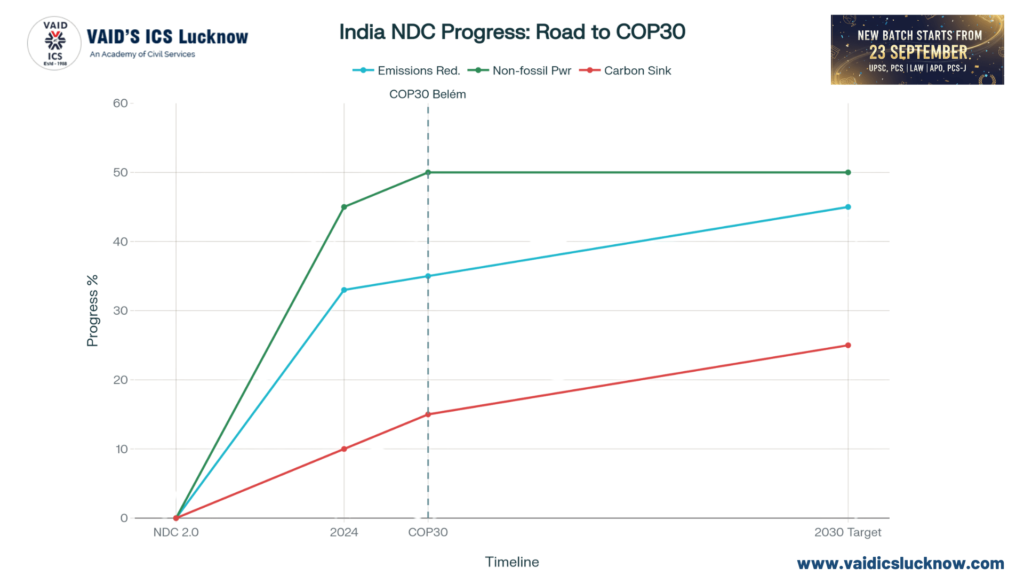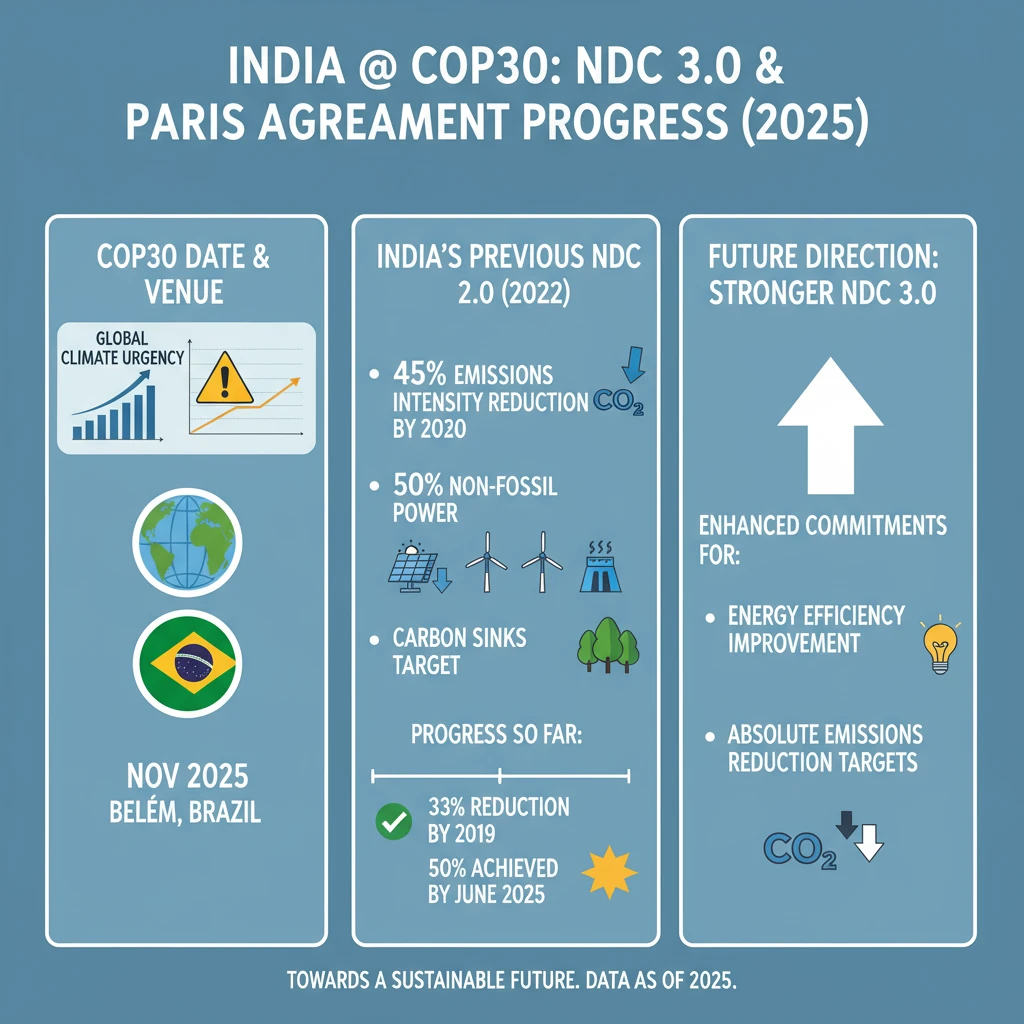September 24, 2025
COP30: 7 Bold Breakthroughs in India’s NDC 3.0 Climate Goals
COP30 in Belém, Brazil.
India is preparing to submit its updated Nationally Determined Contributions (NDCs), called NDC 3.0, around November 10, 2025, at the start of COP30 in Belém, Brazil.
These updates are expected to include stronger commitments, especially for improving energy efficiency and further reducing emissions intensity.
This step comes when global efforts are falling short of the Paris Agreement goal: to limit warming to below 2°C, preferably 1.5°C, by the end of this century.
Previous Commitments – NDC 2.0 (2022 Update):
India updated its climate targets under the Paris Agreement in August 2022.
The key commitments were:
- Emission intensity reduction: India pledged to reduce the emissions intensity of its GDP by 45% compared to 2005 levels by 2030.
Emission intensity refers to the amount of carbon emitted per unit of GDP, meaning India committed to cleaner economic growth even if total emissions continue to rise. - Non-fossil fuel power capacity: India committed to achieving 50% of total installed power generation capacity from non-fossil fuel sources such as solar, wind, hydro, and nuclear.
- Carbon sink creation: India set a target to create an additional carbon sink of 2.5 to 3 billion tonnes of CO₂ equivalent through increased forest and tree cover.
Progress So Far:
India has reported significant progress to the UN:
- By 2019, India had already reduced emissions intensity by 33% compared to 2005 levels, showing steady movement toward the 2030 goal.
- By June 2025, India achieved 50% of total power generation capacity from non-fossil fuel sources, meeting the target five years ahead of schedule.

What to Expect from NDC 3.0:
The upcoming NDC 3.0 is expected to:
- Extend climate targets up to 2035, setting new and more ambitious goals.
- Focus on energy efficiency and sector-specific emission reduction strategies.
- Roll out the India Carbon Market in 2026, which will cover 13 major sectors like power, steel, cement, and transport.
Under this market mechanism:
- Each sector will have mandatory emission intensity reduction goals.
- Companies achieving extra reductions will earn emission reduction certificates, which can be sold to other companies that fail to meet their targets.
- This will create a market-driven approach to incentivize cleaner technologies and innovations.
Global Context:
Only 30 out of 190+ countries have submitted their updated NDCs ahead of COP30.
Key global developments:
- European Union (EU):
- It has a long-term goal of net zero emissions by 2050.
- It is debating its 2035 target, expected to be between 66.25% and 72.5% emissions reduction compared to 1990 levels.
- Finalization is delayed due to disagreements among major member states like France and Germany.
- Australia:
- Announced a 62% to 70% emissions cut below 2005 levels by 2035.
- Global temperature outlook:
- Even if all existing commitments are fully achieved, global temperatures are projected to rise by around 3°C by 2100, far exceeding the Paris Agreement target.
India Carbon Market (ICM):
The India Carbon Market, to be launched in 2026, will play a vital role in achieving NDC 3.0 targets.
Key features:
- Companies will be assigned emission reduction targets based on their sector.
- Overachievers will receive tradable credits, which can be sold.
- Underperformers will be required to purchase credits to meet their compliance obligations.
This will encourage industries to adopt cleaner practices while ensuring economic growth.
September 24, 2025
September 23, 2025
September 22, 2025
September 17, 2025

